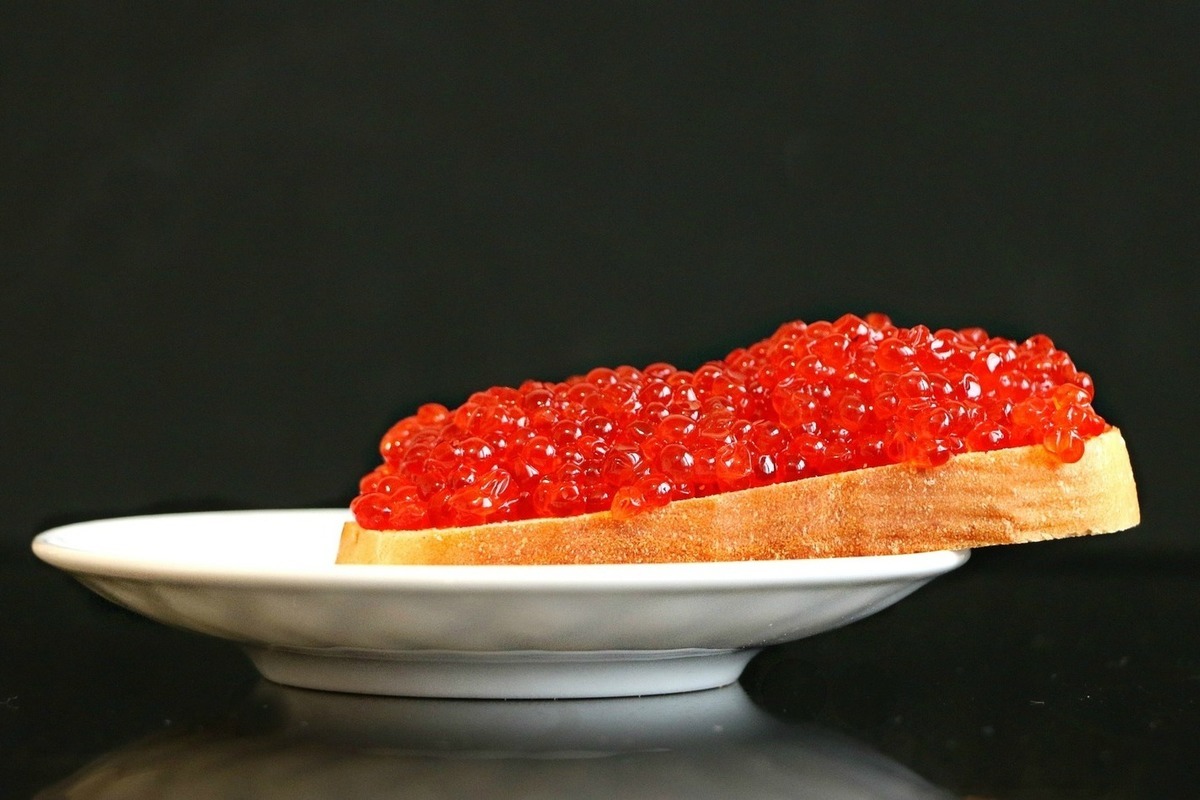The minimum retail price of red caviar has been announced: how not to run into a fake
[ad_1]

New Year’s delicacy is becoming more expensive without losing popularity
On New Year’s Eve, Russian fish producers spoke about the minimum possible retail price for legal red caviar. According to analysts’ calculations, a full-fledged product (not imitated or structured, but natural granular salmon caviar) should cost no less than 6,300 rubles per kilogram. This corresponds to the prices of most capital caviar stores – and, despite the rise in price, caviar is in greater demand than a year ago. MK found out why they began to buy caviar more actively in Russia.
The minimum price of legal red caviar at 6,300 rubles per kilogram was calculated by the All-Russian Association of Fisheries Enterprises, Entrepreneurs and Exporters (VARPE). In relation to Kamchatka caviar (Kamchatka is the main supplier of the product), the formula is as follows: 3,000 rubles per kilogram is the selling price, another 2,111 rubles are markups for intermediate links in the trade chain. About 470 rubles in the price of a kilogram of caviar is spent on packaging and repackaging, about 300 on promotions, and another 200 rubles on the so-called retrobonus.
Finally, logistics accounts for 57 rubles per kilogram (25 from the fishing site to Vladivostok, 32 for rail transportation to Moscow), VARPE President German Zverev said in December. The head of the association also pointed out the price inequality between Moscow and the regions – the capital is the main logistics hub, so in most “non-caviar” regions the product is more expensive than in Moscow. For example, a can that costs 560 rubles on the counter in the capital may cost 600 rubles in Kostroma, and even in Krasnoyarsk (although delivery there should be cheaper than to Moscow) – 575 rubles.
“Despite the fact that they warned about a strong rise in the price of red caviar, prices have not yet increased too much compared to last year,” a salesperson at a chain store specializing in caviar and seafood told MK. — The increase was about ten percent: if previously a small jar of grainy caviar (90–100 grams) cost about 600 rubles, and a two-hundred-gram jar a little over a thousand, now 200 grams will cost about 1200, and a small jar about 650 rubles.
According to the observations of MK’s interlocutor, this year there was a consumer turning point: the most popular, at least in specialized stores, was not a 100-gram, but a 200-gram jar of red caviar. “They take it specifically for a holiday, maybe for several people, but one way or another they take it,” notes the seller. “In general, this year they buy very well, sometimes by the end of the weekend we sit without caviar, they only deliver it on Monday morning, and on the weekend everything is sold out.”
At the same time, the desire to save money has not gone away, the seller said – it’s just now more often realized by choosing the type of caviar. Caviar of chum salmon, coho salmon, sockeye salmon, pink salmon – these varieties can vary in price by 100–200 rubles per hundred grams. At the same time, pink salmon remains the most affordable variety – both large chum salmon caviar and delicious-tasting coho salmon caviar are more expensive.
All this is in specialized caviar or fish stores. And in supermarkets – where over the past couple of decades we have become accustomed to buying caviar – the most inexpensive products are sold out more, that is, structured (collected from “caviar mass”, crushed or defrosted, based on gelatin) and even imitation caviar. The packaging design desperately imitates grainy caviar – but the price of less than 500 rubles per hundred grams betrays the catch.
“In our network this year, the demand for traditional granular caviar has decreased,” says Irina Khlopova, a merchandiser at one of the federal retail chains. “This process has been going on for several years now; it is a consequence of the rise in caviar prices. Demand goes into two niches: on the one hand, into structured and simulated caviar, on the other, into natural caviar of base fish. This is the caviar of pollock, cod, and pike.
Let us add that prices for “alternative” caviar – those very low-grade fish – have also increased in recent years. If five or six years ago pollock caviar could cost on par with structured red caviar, now its price is only slightly lower than red granular caviar.
It is interesting that one of the reasons for the growing popularity of large – two hundred gram jars of red caviar, according to employees of specialized stores interviewed by MK, may be its relative reduction in price. Indeed, in modern times, when when buying a jar of caviar, a five-hundred-ruble piece of paper is not enough—you need at least a thousand—purchasing a large jar seems more profitable. I’ve already parted with a thousand rubles – so why not add a couple hundred more and buy twice as much of the delicacy?
[ad_2]
Source link






